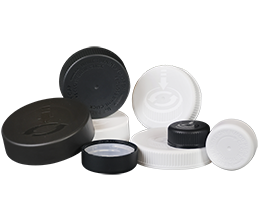
The Origins of Child-Resistant Technology
In 1967, Dr. Henri Breault the Chief of Pediatrics and Director of the Poison Control Centre at Hotel Dieu Hospital in Ontario is credited with inventing the first child-proof container. He had seen, firsthand, a staggering number of children that were accidentally poisoned by ingesting adult medications. Canada had over 100,000 reported incidences a year resulting in over 100 deaths annually.[1] Breault’s design was so successful it dropped the incidence rate by 91%!
The United States was quick to adopt this technology as well and passed the Poison Prevention Packaging Act of 1970, which gave the U.S. Consumer Product Safety Commission the authority to regulate packaging on all items that could attribute to the accidental poisoning of children. This included household products in addition to over-the-counter medication and prescriptions. Breault’s design has been improved upon, but the principle remains the same, requiring the closure to be pushed down when turning, a motion that for small children is difficult, making the items inside the package less accessible.
Dr. Breault may not have been the first however. Historians believe that the first documented child-resistant closure (CRC) was discovered in 1986 when University of Texas archeologists uncovered a pot with a locking lid while surveying a Mayan ruin in Guatemala. Analyzing the contents of this 5th century pot discovered that it held chocolate, which has been known to be a central part of Mayan religious culture.[2]
PHOENIX introduced our first CRC in 2017 with an innovative one-piece closure, Horizon™. We quickly followed by launching a traditional two-piece CRC, Vista®, in 2019. Both offer an exceptional, high quality packaging experience for consumers.
 Horizon One-Piece Child-Resistant Closures
Horizon One-Piece Child-Resistant Closures
To help our customers meet their sustainability goals, PHOENIX created a one-piece CRC that is specifically designed with seniors in mind. This palm-and-turn style closure allows people with limited mobility in their hands to more easily open and close the products they use on a regular basis. In addition, the one-piece design uses less plastic than a traditional 2-piece CRC creating less waste. Horizon is a great solution for larger and small containers alike. This closure can also be designed in round and square shapes to create a custom look for your brand.
 Vista Two-Piece Child-Resistant Closures
Vista Two-Piece Child-Resistant Closures
The traditional 2-piece CRC that you probably picture when you think about child safety has been reimagined with Vista. This closure features the function and capability you have known for years, but has been redesigned as one of the lightest weight 2-piece CRCs on the market. PHOENIX offers Vista closures in a range of sizes from 28mm to 63mm.
Both CRC technologies have a more traditional ribbed finish or can be given a fresh look with our patented Smatte™ finish. This smooth, matte closure gives a modern take on a vitamin, mineral, or supplement, an area of the market that has been outpacing the economy.
Child-resistant technology has come a long way since the 5th century. PHOENIX takes a great deal of pride in offering high-quality CRCs with a modern look and feel. Check out our full line of CRCs on our website.
[1] https://www.mentalfloss.com/article/54410/surprising-origins-child-proof-lids
[2] https://www.packagingnews.co.uk/features/comment/history-of-the-world-in-52-packs-13-child-resistant-packaging-26-10-2015


